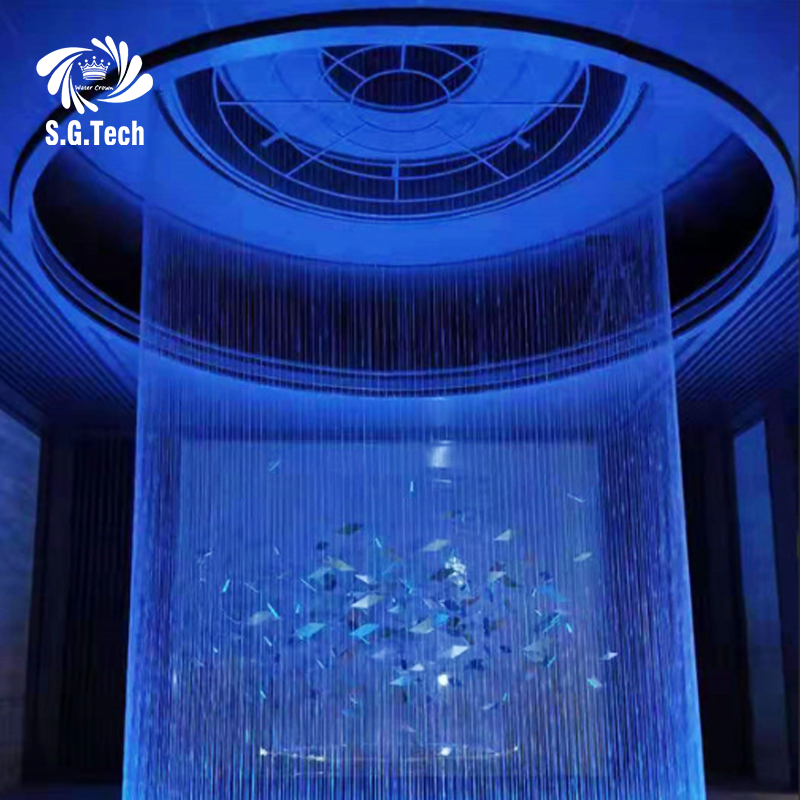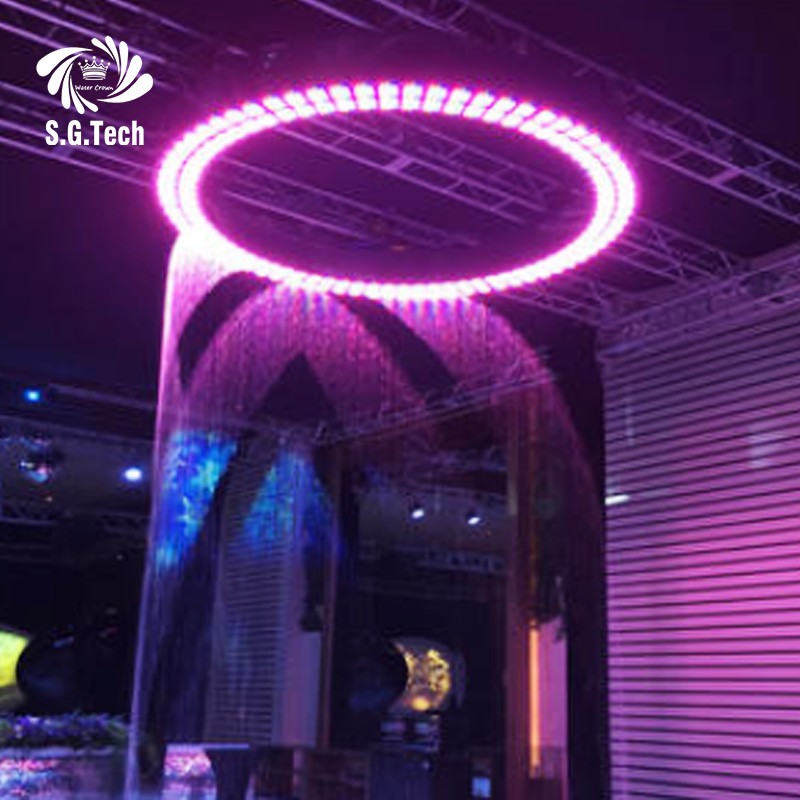
संगीत कार्यक्रम के लिए पर्दा मंच डिज़ाइन में एक महत्वपूर्ण तत्व है, समग्र प्रदर्शन अनुभव को बढ़ावा देने में महत्वपूर्ण भूमिका निभाता है। इसके पास कई कार्य होते हैं, जो बाद में संगीत को पूरक दृश्य प्रभाव बनाने से लेकर मूड सेट करने तक होते हैं। सामग्री के रूप में, संगीत कार्यक्रम के पर्दे आमतौर पर उन विशेष गुणों के लिए चुनी गई विभिन्न प्रकार की ऊर्जा से बनते हैं। वेल्वेट जैसी भारी ऊर्जा लोकप्रिय हैं, क्योंकि वे पूरी तरह से प्रकाश को रोकने की क्षमता रखती हैं, जिससे एक अंधेरा पृष्ठभूमि बन जाती है जो ड्रामाटिक प्रकाश प्रभाव को सक्षम बनाती है। वेल्वेट में लक्ष्य और अनुभव को बढ़ाने के लिए भी एक आकर्षक दिखाई देती है। दूसरी ओर, मसलिन जैसी हल्की ऊर्जा का उपयोग उनकी पारदर्शिता के कारण किया जाता है, जो मेक सॉफ्ट, डिफ़्यूज़ प्रकाश प्रभाव बनाने के लिए उपयोग की जा सकती है। विशेष कोटिंग वाली कृत्रिम ऊर्जा भी उपयोग की जाती है, विशेष रूप से ऐसे पर्दे के लिए जिन्हें आग से प्रतिरोधी होना आवश्यक है, जो सार्वजनिक प्रदर्शन स्थलों में एक महत्वपूर्ण सुरक्षा आवश्यकता है। संगीत कार्यक्रम के पर्दे का डिज़ाइन संगीत प्रदर्शन के थीम और शैली के साथ अत्यधिक समन्वित होता है। एक क्लासिक संगीत कांसर्ट के लिए, विलक्षण और जटिल डिज़ाइन या साधारण, धन्य रंगों की ऊर्जा का उपयोग किया जा सकता है जो एक उदार वातावरण बनाता है। इसके विपरीत, रॉक या पॉप कांसर्ट के लिए, अधिक रंगीन और आकर्षक डिज़ाइन, जैसे मजबूत ज्यामितीय डिज़ाइन या संगीत शैली से संबंधित छवियां, अक्सर उपयोग की जाती हैं जो प्रदर्शन की ऊर्जा और डायनेमिक प्रकृति को मिलाती हैं। प्रकाश भी संगीत कार्यक्रम के पर्दे के डिज़ाइन का एक अनिवार्य हिस्सा है। विशेषज्ञ प्रकाश प्रणाली, जिनमें स्पॉटलाइट, फ्लूडलाइट और LED स्ट्रिप्स शामिल हैं, पर्दों को चमकाने के लिए उपयोग की जाती हैं। ये प्रकाश प्रोग्राम किए जा सकते हैं जो संगीत के साथ रंग, तीव्रता और पैटर्न में परिवर्तन करते हैं, जो एक आकर्षक दृश्य प्रदर्शन बनाते हैं। उदाहरण के लिए, एक धीमी, भावनात्मक गाने के दौरान, नरम, गर्म रंगों के प्रकाश का उपयोग किया जा सकता है जो एक अधिक घनिष्ठ वातावरण बनाता है, जबकि एक उत्साहित, ऊर्जावान ट्रैक के दौरान, चमकीले, चमकदार प्रकाश उत्साह में बढ़ावा दे सकते हैं। गति एक और महत्वपूर्ण पहलू है। कई संगीत कार्यक्रम के पर्दे को हाथ से या स्वचालित प्रणालियों के माध्यम से चलाने के लिए डिज़ाइन किए जाते हैं। स्वचालित पर्दे प्रदर्शन के दौरान विशिष्ट पैटर्न में खुलने, बंद होने या चलने के लिए ठीक से नियंत्रित किए जा सकते हैं। यह गति मंच के हिस्सों को प्रकट या छिपाने, प्रदर्शकों को पेश करने या प्रदर्शन के विभिन्न खंडों के बीच दृश्य संक्रमण बनाने के लिए उपयोग की जा सकती है। इसके अलावा, कुछ पर्दे ध्वनि या अन्य उत्तेजना पर प्रतिक्रिया देने के लिए इंटरएक्टिव डिज़ाइन किए जाते हैं। उदाहरण के लिए, संगीत की ध्वनि के अनुसार झूमने या झुलने वाले पर्दे दर्शकों के लिए एक अतिरिक्त स्तर का अनुभव जोड़ सकते हैं। संगीत कार्यक्रम के पर्दों की स्थापना और रखरखाव भी महत्वपूर्ण मामले हैं। उन्हें अक्सर इस्तेमाल और गति की कठिनाइयों को सहन करने के लिए सुरक्षित रूप से स्थापित किया जाना चाहिए। नियमित रखरखाव, जिसमें सफाई, पहन-पोहन की जाँच और किसी भी क्षतिग्रस्त हिस्सों की बदली, यह सुनिश्चित करने के लिए आवश्यक है कि पर्दे अपने बेहतरीन दिखाई दें और संगीत कार्यक्रम के चलने के दौरान ठीक से काम करते रहें।


